Canada imports rose 3.9% to CAD 56.1B in February. Gains were observed in 9 of 11 import product sections. Exports rose 2.8% to CAD 58.7B, with increases in 8 of 11 products sections. Trade surplus narrowed from CAD 3.1B to CAD 2.7B, smaller than expectation of CAD 2.9B.
Eurozone Q4 GDP growth finalized at 0.3% qoq, EU at 0.5% qoq
Eurozone Q4 GDP growth was finalized at 0.3% qoq while employment grew 0.5% qoq. For 2021 as a whole, GDP grew 5.3%. GDP was 0.2% above pre-pandemic level in Q4 2019.
EU Q4 GDP growth was finalized at 0.4% qoq while employment grew 0.5% qoq. For 2021 as a whole, GDP grew 5.3%. GDP was 0.6% above pre-pandemic level in Q4 2019.
GDP growth by Member State: Slovenia (+5.4%) recorded the highest increase of GDP compared to the previous quarter, followed by Malta (+2.3%), Spain and Hungary (both +2.0%). Decreases were observed in Ireland (-5.4%), Austria (-1.5%), Germany (-0.3%), Croatia, Latvia and Romania (all -0.1%).
ECB Lagarde: Larger than 25bps hike appropriate in Sep if MT inflation outlook persists or deteriorates
In a European Parliament committee hearing, ECB President Christine Lagarde reiterated the policy decision made at June meeting, including ending the asset purchase program, scheduling to raise interest rate by 25bps in July, and to raise interest rates again in September.
As for the September hike, “if the medium-term inflation outlook persists or deteriorates, a larger increment (than 25bps) will be appropriate.”
Beyond September, ECB anticipates that “a gradual but sustained path of further increases in interest rates will be appropriate”, depending on incoming data.
Fed Daly: Last rate cut an appropriate recalibration of policy for headwinds, not impending downturn
In a Quora.com post, San Francisco Fed Mary Daly said the US is not headed towards a recessions right not. She saw “solid domestic momentum that points to a continued economic expansion:. Also, “the labor market is strong, consumer confidence is high, and consumer spending is healthy.”
But “considerable headwinds”, including global slowdown and trade uncertainties, contributed to fear that a “downturn is right around the corner”. Hence, she’s closely look at whether “fear of recession becomes a self-fulfilling prophecy”.
Daly added that recent rate cut was “appropriate recalibration” of policy in response to the headwinds. And, her support was “not because I see an impending downturn on the horizon.”
Fed’s Williams sees rate cut this year, stresses lack of urgency
New York Fed President John William reiterated that he expected rate cuts to start this year, but emphasized there is “no sense of urgency to do that”.
“I think that makes sense with inflation coming down, the economy being in better balance, that we’re going to move interest rates back to more normal levels,” he said at an event overnight.
Williams noted that monetary policy is “in good place”, and the focus now is to gain confidence that inflation is on track to 2% target.
Swiss KOF economic barometer dropped to 129.8, economy still on a strong expansion path
Swiss KOF economic barometer dropped from 133.3 to 129.8 in July. But the indicate is still clearly above the long-term average. KOF added, “the economy is still on a strong expansion path, although the high pace of recent months may not to be sustained.”
“The outlook for manufacturing, foreign demand, construction, financial and insurance services as well as private consumption remains favourable but is not quite as positive as in the previous month. In contrast, the outlook for accommodation and food service activities and for other services is improving,” KOF said.
SNB hikes 50bps, signals more tightening possible
SNB raises its policy rate by 50bps to 1.50% as widely expected. The central bank indicated the openness to further tightening while inflation forecasts are raised due to stronger second-round effects and increased overseas inflationary pressure.
The central bank said the rate hike is for “countering the renewed increase in inflationary pressure”. It also noted in the statement, “it cannot be ruled out that additional rises in the SNB policy rate will be necessary to ensure price stability over the medium term.” It also remains “willing to be active in the foreign exchange market” with focus on “selling foreign currency” for some quarters.
The bank’s conditional inflation forecast assumes an interest rate of 1.5% over the horizon. Average inflation estimates for 2023 and 2024 were raised from 2.4% to 2.6% and from 1.8% to 2.0%, respectively. Inflation is projected to average 2.0% in 2025, a new forecast.
SNB statement highlighted that “stronger second-round effects and the fact that inflationary pressure from abroad has increased again mean that, despite the raising of the SNB policy rate, the new forecast is higher through to mid-2025 than in December.”
The central bank anticipates a modest GDP growth of around 1% for the year, citing subdued foreign demand and the dampening effect of inflation on purchasing power.
Gold resumes rebound, heading back to 1700, but no break expected
Gold is lifted by return of risk appetite today, as DOW is current up over 1000 pts. The break of 1644.67 resistance suggests resumption of whole rebound from 1451.16. Further rise should now be seen to 61.8% projection of 1451.16 to 1644.67 from 1567.78 at 1687.36.
However, recent price actions from 1703.28 high are seen as a medium term consolidation pattern, that corrects whole up trend from 1160.17. Hence, we won’t expect a firm break of 1703.28 for now. Instead, another fall should be seen to extend the consolidation. Break of 1567.78 will turn near term outlook bearish for 1451.16.
US PMI manufacturing dropped to 50.6, 116-month low, spreading to services
In May, US PMI manufacturing dropped sharply to 50.6, down from 52.6, missed expectation of 52.7. It’s also the lowest level in 116 months. PMI services dropped to 50.9, down from 53.0 and missed expectation of 53.5. it’s the lowest level in 39 months. PMI Composite dropped to 50.9, down from 53.0, a 36-month low.
Commenting on the flash PMI data, Chris Williamson, Chief Business Economist at IHS Markit said:
“Growth of business activity slowed sharply in May as trade war worries and increased uncertainty dealt a further blow to order book growth and business confidence.
“A decline in the headline ‘flash’ PMI to its lowest for three years pushes the survey data down to a level historically consistent with GDP growing at an annualised rate of just 1.2% in May. Worse may be to come, as inflows of new business showed the smallest rise seen this side of the global financial crisis. Business confidence has meanwhile slumped to its lowest since at least 2012, causing firms to tighten their belts, notably in respect to hiring. Jobs growth in May was the weakest seen for over two years.
“The slowdown has been led by manufacturing, but shows increasing signs of spreading to services. The survey data have been consistent with falling manufacturing output since February, but suggest that the sector’s woes intensified in May to mean factories will therefore likely act as an increasing drag on the economy in the second quarter. Trade wars remained top of the list of concerns among manufacturers, alongside signs of slower sales and weaker economic growth both at home and in key export markets.
“However, an additional concern is the spreading of the malaise to the service sector, growth of which slumped in May to one of the weakest since the global financial crisis. With the service sector’s performance being a key gauge of the health of domestic demand, this broadening-out of the slowdown poses downside risks to the outlook.”
BoE Bailey very uncertain particularly about price-setting and wage-setting
BoE Governor Andrew Bailey said in a Treasury Committee hearing, “we are concerned about persistence (of inflation) and that’s why, frankly, we raised interest rates this time.”
“I am very uncertain particularly about price-setting and wage-setting in this country. We have got the largest upside skew in our forecasts that we have ever had on inflation,” Bailey added.
Nevertheless, “what I would urge is that – particularly going forwards because we think inflation is going to fall very rapidly – that is taken into account,” Bailey added.
Chief Economist Huw Pill said, “There is no room for complacency. Inflation remains unacceptably high… Returning inflation to target in a sustainable manner requires that the MPC continues to be watchful for signs of greater persistence in inflationary pressures than is embodied in our baseline forecast.”
MPC member Jonathan Haskel warned, “Economic theory suggests that uncertainty around the persistence of inflation should be met with more forceful action… I shall remain alert to indications that inflation is more persistent than we expected, and act forcefully if necessary.”
On the other hand, Silvana Tenreyro said, “Unless there is another big development that we don’t know about – and we have a massive energy shock or something that is not on the cards – then I think they fall in inflation is pretty much guaranteed.”
“Where things stand right now, I would see myself considering a cut. I don’t want to talk about the particular meeting,: Tenreyo added.
Fed minutes show majority leaning towards further rate hike
In the minutes from Fed’s September 19-20 meeting, while “a majority of participants” believed another rate increase might be in order, a contrasting view was held by “some” who deemed no further hikes necessary.
A unanimous consensus was evident among all attendees that the existing policy stance needs to “remain restrictive for some time”. The chief rationale behind this unified sentiment is to ensure that inflation trends downwards in a sustained manner to Fed’s target.
An interesting shift in communication strategy was proposed by “several participants”. They emphasized that discussions and subsequent messaging should transition from deliberating the potential height of rate hikes to determining the duration for which rates should be maintained at these elevated, restrictive levels.
In terms of gauging risks, participants “generally judged” that challenges to fulfilling the Fed’s mandates had become “more two sided”. However, a lingering concern persists. Despite this balanced view of risks, “most participants” continued to see upside risks to inflation.
ECB policymakers push common fiscal responses from governments
ECB Governing Council Member Olli Rehn said that Eurozone is now at a “critical juncture” with the coronavirus pandemic. It is “essential for Eurozone governments to “get their acts together and agree to a coordinated European fiscal response.” “There’s a saying: never waste a crisis. Therefore it’s important that euro area governments agree at this critical moment on some kind of a safe asset that could provide sturdy support for financing,” he added.
Another Governing Council member Pablo Hernandez de Cos also called for a common fiscal response using the European Stability Mechanism, the European Investment Bank, the EU’s common budget or other “risk sharing” tools. He urged, “greater ambition and coordination are not just an option; they are a necessity.”
ECB’s Simkus and Müller urge caution over aggressive rate cut expectations
ECB Governing Council Gediminas Simkus expressed a conditional optimism about rate reductions within the year, stating, “If we don’t see any surprises that would change the data and the thinking, I’m positive about rate cuts this year.”
However, Simkus tempered his outlook with a dose of realism regarding the timing of these cuts. He clarified, “I’m far less optimistic than markets about rate cuts in March or April.”
Separately, another Governing Council member Madis Müller commented on the aggressiveness of market expectations for ECB rate cuts in 2024. He observed that these expectations do not align with the current data available to the central bank.
Müller further emphasized that wage growth in Eurozone remains out of sync with the ECB’s current inflation targets. He noted that ECB cannot proceed with cutting rates until data reflects the desired price growth conditions.
Eurozone industrial production dropped -0.2% mom in Sep, EU down -0.5% mom
Eurozone industrial production dropped -0.2% mom in September, better than expectation of -0.5% mom. Production of capital goods fell by -0.7%, intermediate goods by -0.2%, while production of energy remained stable, durable consumer goods rose by 0.5% and non-durable consumer goods by 1.0%.
EU industrial production dropped -0.5% mom. Among Member States for which data are available, the largest monthly decreases were registered in Denmark (-5.0%), Czechia (-3.2%) and Austria (-3.0%). The highest increases were observed in Estonia (+5.3%), Lithuania (+4.3%) and Belgium (+3.7%).
Australia retail sales rose 8.2% on unprecedented demand
Preliminary readings showed Australia retail sales rose 8.2% in March. That’s the strongest seasonally adjusted rise ever published. ABS said the data indicated “unprecedented demand in March in the Food retailing industry, with strong sales across supermarkets, liquor retailing and other specialised food.”
The rise was “slightly offset by strong falls in industries including cafes, restaurants and takeaway food services, and clothing, footwear and personal accessory retailing, which were impacted by new social distancing regulations introduced in March. ”
Retail turnover, current prices, seasonally adjusted, percentage change
BoE announces gilt operation to restore orderly market conditions
BoE announced today to carry out temporary purchases of long-dated UK government bonds, to “restore orderly market conditions”. It warned that the significant repricing of UK and global financial assets “has become more significant in the past day”, particularly affecting long-dated government debt. Continuing or worsening dysfunction would be a “material risk” to financial stability.
The purchases will be carried out on “whatever scale is necessary” to effect this outcome. However, they will be “strictly time limited” with auctions taking place from today until October 14.
BoE also reiterated that a full assessment of the government’s mini budget will be done at its “next scheduled meeting”. BoE “will not hesitate to change interest rates by as much as needed to return inflation to the 2% target sustainably in the medium term, in line with its remit.”
GBP/USD was lifted briefly after the announcement, and turned south quickly.
UK GDP dropped -0.1% in February, no growth before coronavirus outbreak
UK GDP contracted -0.1% mom in February, below expectation of 0.1% mom. Index of services rose 0.0% mom. Index of production rose 0.1% mom. Manufacturing rose 0.5% mom. Construction dropped -1.7% mom. Agriculture dropped -0.1% mom.
For the three months to February, GDP grew just 0.1% 3mo3m. Index of services rose 0.2% 3mo3m, the only positive contribution to GDP growth, by 0.15%. Index of production dropped -0.6% 3mo3m, contributed to -0.08% GDP growth. Construction dropped -0.2% 3mo3m, contributed to -0.01% GDP growth.
Rob Kent-Smith, Head of GDP, Office for National Statistics: “Today’s figures show that in the three months to February, which was before the full effects of Coronavirus took hold, the economy continued to show little to no growth. Most elements of the services sector grew, though manufacturing continued to decline. Construction saw a notable fall in February, as wet weather and flooding hampered housebuilding. The underlying trade balance moved into surplus in the latest 3-months, the first seen since comparable records began over 20 years ago. This surplus was caused by a large fall in goods imported from EU countries.”
Also from the UK, industrial production came in at 0.1% mom, -2.8% yoy in February, versus expectation of 0.3% mom, -2.8% yoy. manufacturing production came in at 0.5% mom, -3.9% yoy, versus expectation of 0.3% mom, -3.9% yoy. Goods trade deficit widened sharply to GBP-11.5B, versus expectation of GBP -6.0B.
US ISM manufacturing rose to 54.2, recovery continues
US ISM Manufacturing Index rose to 54.2 in July, up from 52.6, slightly above expectation of 54.0. The data suggests that manufacturing is staying in growth for the third month in a row, after a month of contraction in April. Looking at some details, new orders rose sharply to 61.5, up form 56.4. Production jumped to 62.1, up from 57.3. Prices also rose to 53.2, up from 51.3. Employment improved to 44.3, up from 42.1, but stayed in contraction.
Timothy R. Fiore, Chair of the ISM Manufacturing Business Survey Committee: “In July, manufacturing continued its recovery after the disruption caused by the coronavirus (COVID-19) pandemic. Panel sentiment was generally optimistic (two positive comments for every one cautious comment), continuing a trend from June.




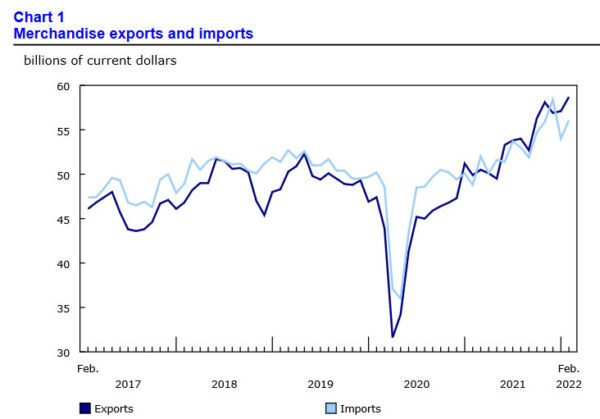
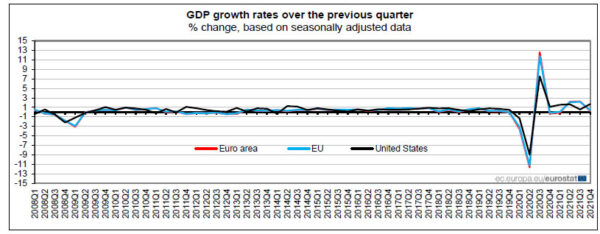
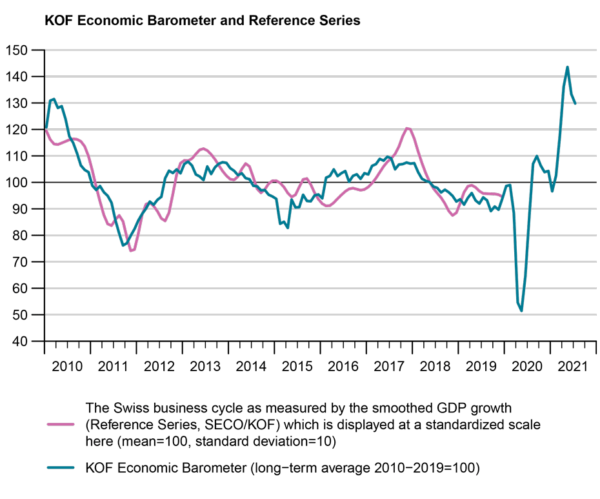



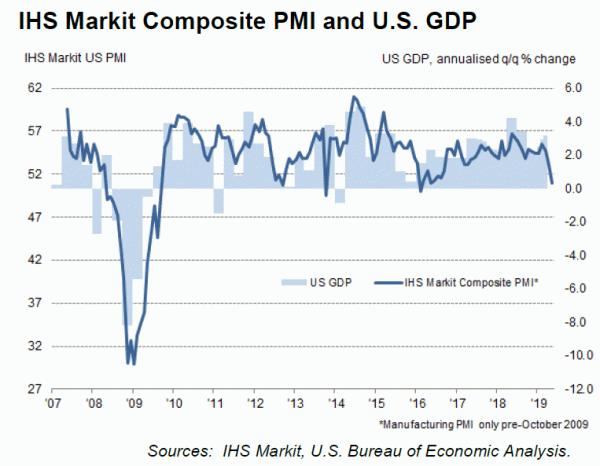

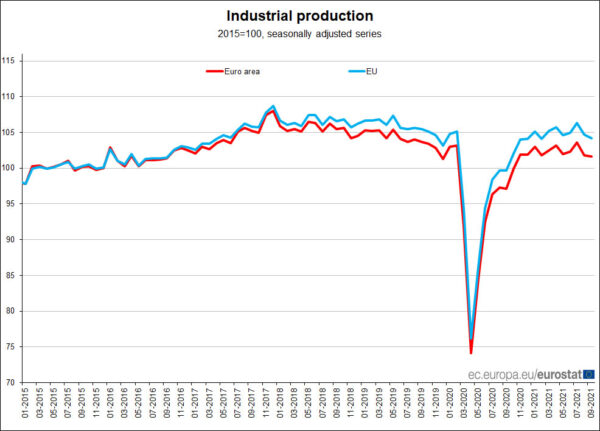
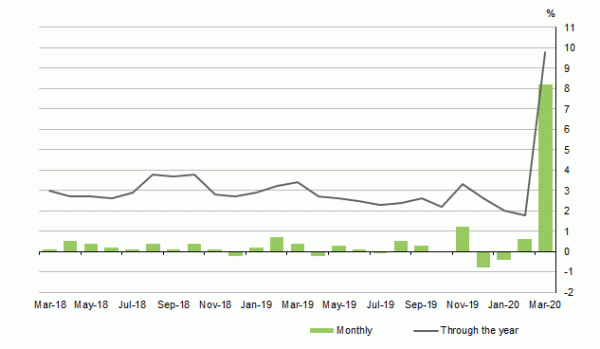
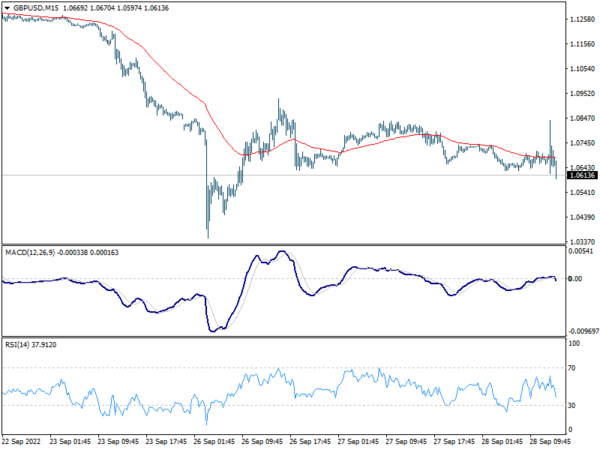
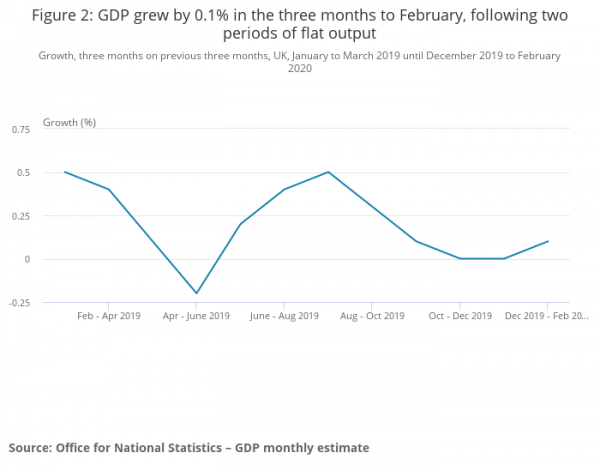
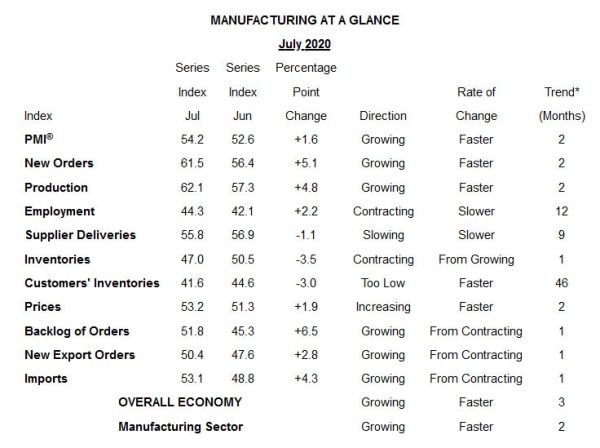

BoJ Minutes: Firm domestic demand offset drag from overseas slowdown
Minutes of the March 14/15 BoJ meeting noted that members “concurred” that the economy will continue to its “moderate expansion”. “domestic demand was likely to follow an uptrend”, including fixed investment and private consumption. That should offset weakness in exports and product as dragged down by overseas slowdown.
On prices, members reiterated that CPI ‘continued to show relatively weak developments compared to the economic expansion and the labor market tightening.” But CPI is still “likely to increase gradually” toward 2% target.
On monetary policy, members agreed that it was “appropriate” to persistently continue with the powerful monetary easing under the current guideline. On member warned of the “side effects” of maintaining current easing. One member warned that if downside risks were materializing, BoJ should be prepared to make policy responses. One member also noted the importance to “preemptive policy responses” in case of phase shift in developments.
Full minutes here.